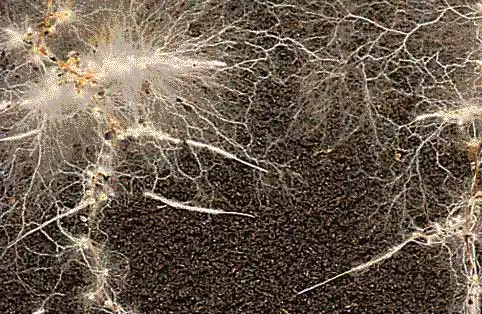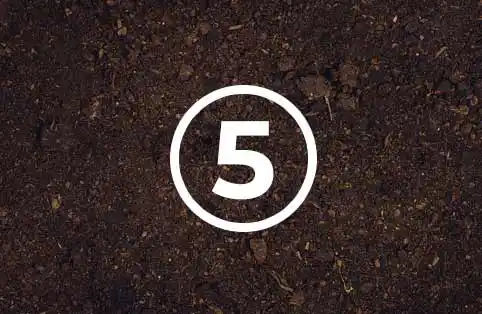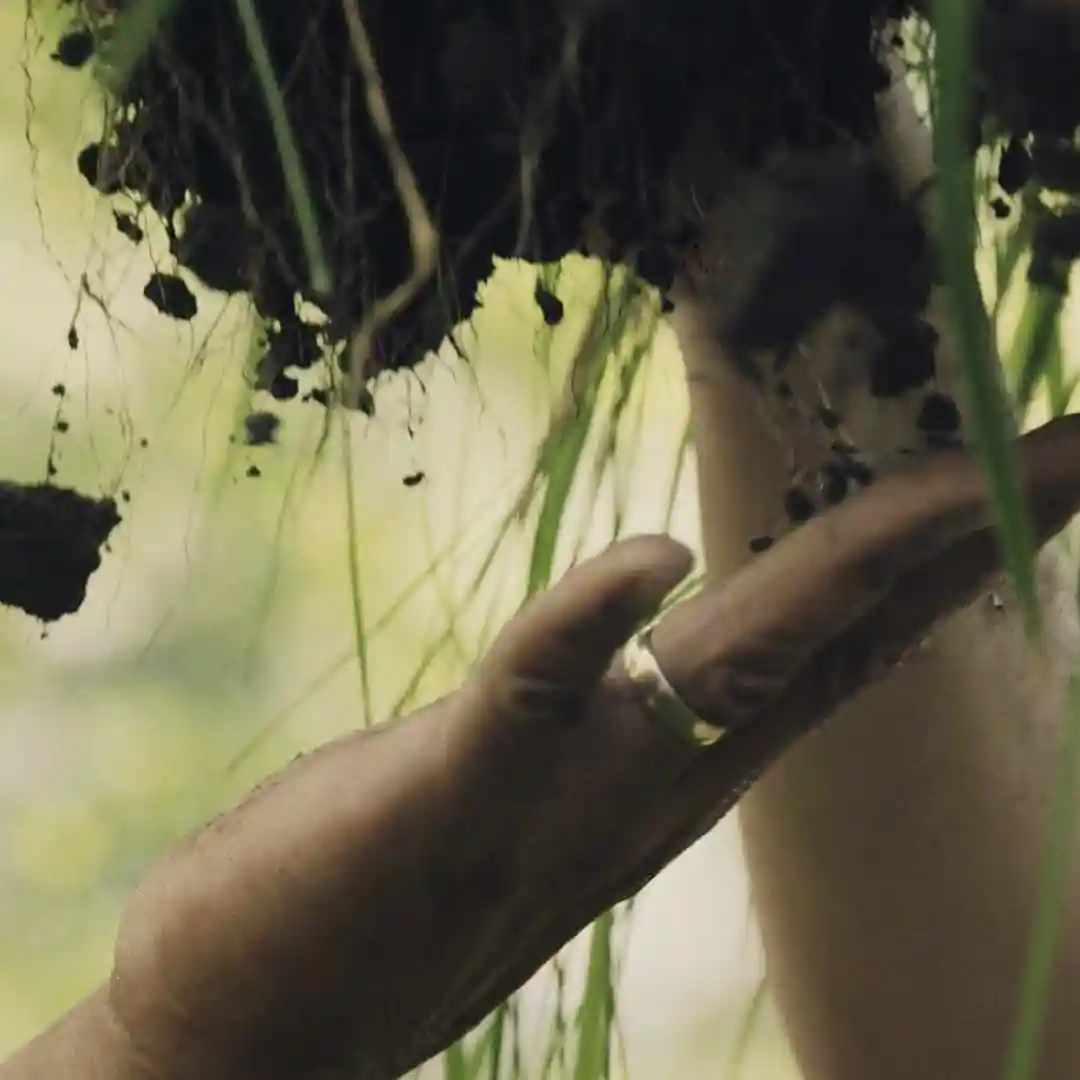THE SECRET LIFE OF ROOTS
Roots are the anchor to the earth.
They act as the channel for nutrients and water to give plants life. Roots are a social network that exists underground. They often go unnoticed but play a key role in the performance of the ecosystem of the soil: growing our food, feeding our families, and, ultimately, shaping our health.
Without root systems in place, our food lacks hydration and nutrients we need, and the topsoil is more likely to be washed and blown away.
One teaspoon of healthy soil can contain as many as one billion bacteria, plus fungi, protozoa and nematodes. Healthy organisms in soil — both large (e.g., earthworms) and small (e.g., bacteria) — are important, because they perform many functions, from aeration, to creating pockets in the soil for water, to breaking down organic material and making nutrients available for plants.
We are going to break ground and shed some sunlight on The Secret Lives of Roots and our goal is to not just share the knowledge but to give you the tools to apply it in your own gardens and farms. Let’s dig in.
Here are the 3 main players in the root system:

MYCORRHIZAE

RHIZOBIA

RHIZOSPHERE
MYCORRHIZAE
Roll out the red carpet. Meet the show-stopper and famous fungus known as mycorrhizae.
When mycorrhizae take the stage in thriving soil, there is a biological tango of give and take created. Cue the music…
Plants take excess sugar produced in the leaves through photosynthesis and send it to the roots. From here, the mycorrhizae are able to absorb it to sustain themselves. The sugar from the plants keeps the mycorrhizae fed and alive. In turn, the mycorrhizae bring nitrogen and phosphorous back to the plant. This dance is critical to soil health.
This spectacular living web, interconnecting organisms within the soil, is shattered when two things happen:
1.) Soil is tilled – a common practice industrial farms use to mechanically agitate the soil
2.) Chemical herbicide planting systems are used for annual commodity crops, like Roundup Ready soybeans and corn
On the other side of the root, regenerative farming gives a standing ovation to no-till practices and mimicking nature through holistic management which allow root systems to do what they do best, weaving their magical web deep in the soil to support that living web. Soil anchored to the earth by roots resists depletion, and feeds nutrient rich food.
RHIZOBIA
Meet the wizard of the root system. If you want to talk about how soil health can reverse climate change, you need to know about rhizobia.
See, roots thrive in relationship. Not only do they create connections with mycorrhizae, but they also connect with the rhizobia bacteria that is as critical to soil as breath is to humans.
The rhizobia convert atmospheric nitrogen into ammonia inside special structures known as root nodules.
To do so, the bacteria use a specific enzyme that is not found in plants or animals. The ammonia is converted to plant proteins. And because they fix atmospheric nitrogen, the rhizobia reduce the need to use chemical fertilizers for crop production and increase the nutritional value of crops.
When we harness the power of rhizobia bacteria, it is possible to off-set production costs and improve the sustainability of cropping systems.
RHIZOSPHERE
Make some noise for the rhizosphere.
The rhizosphere is the host of the soil party, and everyone’s invited. It is a thin layer of soil immediately surrounding plant roots made up of bacteria, fungi, archaea, viruses, and protozoa–a dynamic area for root activity, metabolism, and break dancing. Some say it constitutes the second genome of the plant.
Maintaining the environment roots call home is critical. Regenerative farming provides systems to create a rhizosphere that allows roots and crops to grow, all while helping the climate heal. Now that’s something to dance about.
Now, let’s hear from a root expert on the state of the soil and root systems in the midwest

Meet Timothy Kercheville
of Festina Lente Farms.
He’s a root and regenerative farming expert from Kentucky. This is a photo taken of the roots of a native perennial prairie grass versus the roots of annual wheat. The difference is astounding. This shows the brilliance of mother nature side by side with a sad attempt at recreating her intelligence – kind of like a really bad sequel.
When we asked Timothy about the state of the soil in the midwest, here’s what he shared with us.
What is hurting the vast root ecosystems we used to have?
Commodity Crops, Chemical Inputs & Monocropping
Healthy soil is under attack.
It is not only tilling that destroys the living web of soil. Big Ag has been moving away from tilling for decades now and has moved to no-till chemical herbicide planting systems for annual commodity crops, like Roundup Ready soybeans and corn.

Looks beautiful doesn’t it? What you are actually looking at is a field of commodity crops, and in this case, wheat. There are millions of acres of farmland in our country just like this and it’s actually more horrific than many of us could imagine.
Shallow rooted annual commodity crops are not able to sequester carbon, build soil organic matter, or infiltrate water like native grassland – savannahs.
We simply cannot do this to such vast ecosystems and expect ecologically sound or economically just results.

Here’s the ripple effect:
- Chemical herbicide planting systems are used for annual commodity crops
- The underground world disconnects
- The roots cannot reach the vast diversity in the soil needed to bring nutrients to the crops.
- Nodes cannot be created to sequester carbon and fix nitrogen
- The crops lack nutrients, the soil loses diversity and ability to withstand wind, drought, and heavy rains
- Topsoil gets washed and blown away, along with any pesticides and chemicals within it
- It takes approximately 500 years to replace 25 millimeters (1 inch) of topsoil lost to erosion
The minimal soil depth for agricultural production is 150 millimeters. From this perspective, productive fertile soil is an endangered ecosystem.
We must save
our soil.
As we break down the underground communication system in the soil, we lose:
- The nutrients in our food
- Biodiversity in the soil
- Increase topsoil erosion
- We deprive mother nature from pulling carbon back into the earth, and maximizing water absorption.
Here are the top 5 tips to grow soil with a thriving root system.

Keep the soil covered
Cover crops’ primary job is to improve the soil and protect the soil from erosion and nutrient loss. Cover crops also help smother weeds, control pests and diseases, enhance water availability, and increase biodiversity on the farm. The goal of using cover crops is to have little to no bare ground. When you cover the soil, you allow for an ecosystem that supports soil microorganisms like protozoa, nematodes, mycorrhizal fungi which equates to more productive soil. In our film “Regeneration: The Beginning” we feature Grant and Dawn, farmers from Redwood Falls Minnesota, who are transitioning their land to regenerative. They took the first step of converting their monoculture cover crop to a diverse cover crop and it was a game-changer for them. They went from having crop failures to cover crop successes.
Examples of cover crops (from our friends at Rodale Institute): alfalfa, rye, clovers, buckwheat, cowpeas, radish, vetch, Sudan grass, austrian winter peas.
For smaller acreage and gardens, you may choose to keep the soil covered with mulch. Paper rolls, newspaper, hay, straw, weeds, leaves, and decomposing wood chips all are options in mulching. Remember that fresh wood chips will consume nitrogen in their breakdown, so it is better to use aged wood chips. Also, some wood chips may contain allopathic natural chemicals in them that stunt the growth of crops, such as the juglone in walnut trees.

Compost food scraps, and support local compost businesses
Don’t let food go to waste, get a bucket and salvage your food scraps to create your own compost pile and search online for places and local farms to donate your compost.
Here is a quick and informative article on how to get started.www.mamanatural.com/composting. You may be able to find commercial compost suppliers in your area who can help you get started in building up your soil.

Use companion planting arrangements of annuals and perennials
Soil thrives with a diverse influence of inputs. Using a variety of companion planting you create biodiversity, help prevent pest problems, allows the other crops to grow better, allows the soil to use the nutrients more efficiently, helps keep the soil covered, and is one factor that eliminates the need for pesticides.
Check out this snapshot of a case study utilizing sunflowers and sugar cane: www.watershedmackay.land/companion-planting-for-regenerative-agriculture

Integrate animals or organic manures whenever possible
Livestock play a key role in soil health by bringing hoof activity to the farmland allowing the hard cap to break down. Additionally, when livestock are free to move across the land, you maximize distribution of their waste across the intended area. Regenerative agriculture calls for a return to farming that mimics mother nature so when we can provide environments where natural migration across land takes place, animals can express instinctive behavior which allows the soil beneath the herd to behave instinctively as mother nature intended.

Let the soil quality determine what you plant
Observe your soil with a detailed eye and base your plant choices based on what your unique situation calls for. For example, if soil is somewhat compact, loosen it with powerfully rooting plants like daikon radish, annual ryegrass, turnips, sweet potato, and mustard.
At the end of the day, we are a product of our own environment and so are roots.
An appreciation and understanding of the life underneath our crops can help us manage the ecosystem more effectively and we believe it is our responsibility to do so.
Special thanks to Timothy Kercheville of Festinalente Farms for contributing to this topic



